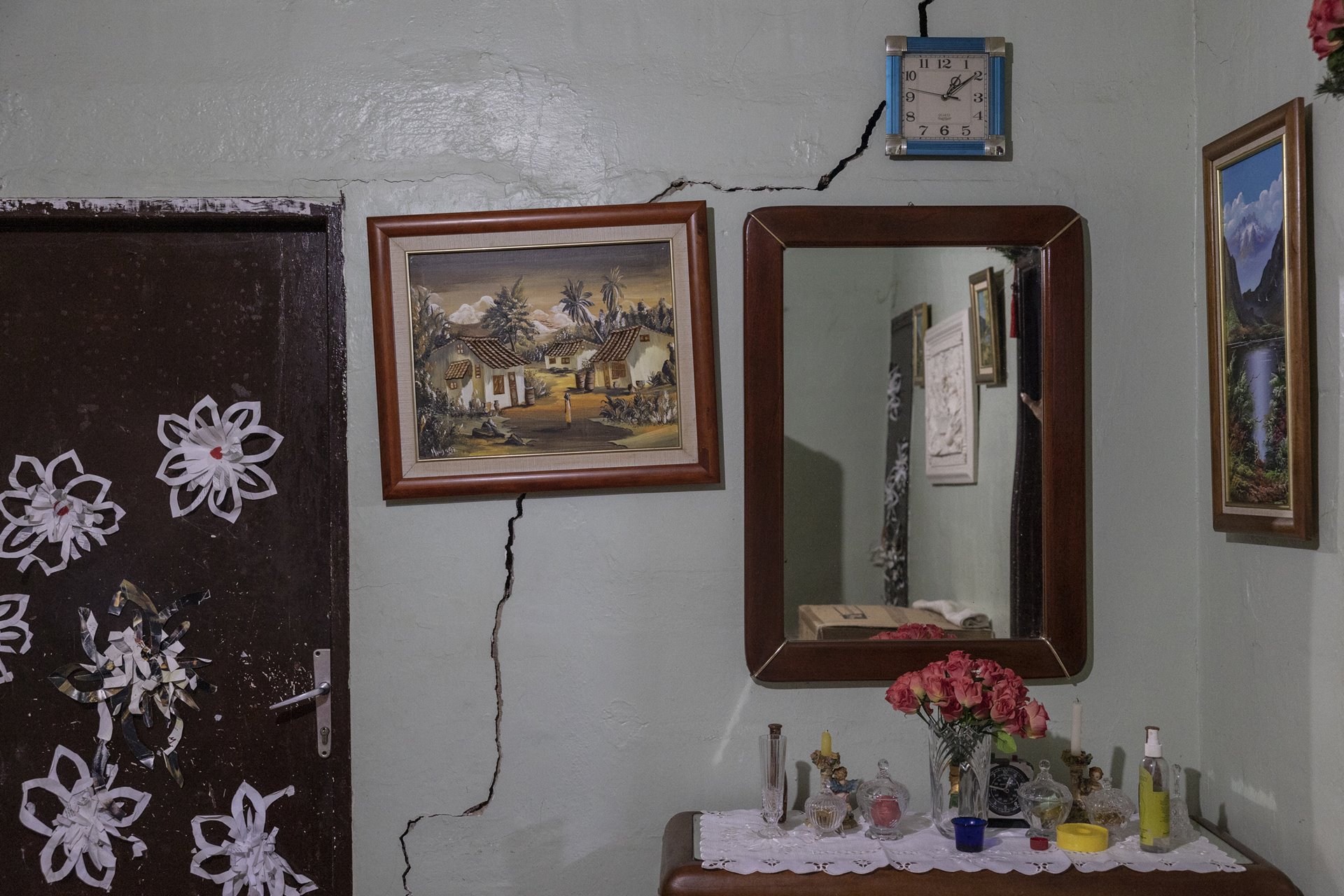A crack caused by subsidence cuts through a wall in the home of Hilda Davalillo (67), in Campo Alegría, an oil community in Cabimas, Zulia State, Venezuela. Hilda was asked to move out due to the high risk of collapse, but she was not given another place to live, so stayed.
Campo Alegría is one of a number of settlements built specifically for workers with the now-ailing state oil company PDVSA, though these days many residents no longer work for the company. Once seen as a symbol of the rising Venezuelan middle class, many such neighborhoods are now falling apart due to subsidence caused by oil drilling, and residents experience lack of basic services.
Millions of Venezuelans have left their country to live abroad, driven by economic collapse, political unrest, high unemployment, and extreme social inequality.
A member of that diaspora since she left in 2016, the photographer returns to her birthplace to search for traces of the Venezuela of her memory. Her project combines images of migration and past political violence with those of present-day Venezuela – of the decay, and of the resilience of people living within it.
Around the turn of the millennium, oil-rich Venezuela was prosperous, but its fortunes declined following plummeting oil prices, later economic mismanagement, and political instability. Unemployment, which stood at 7.4 percent in 2015, rose to 35.6 percent by 2018, and 51.5 percent by 2022, according to the International Monetary Fund. Hyperinflation reached 686 percent in 2021, and though that figure is receding, HumVenezuela reports that some 4.4 million people were in dire need of drinking water from 2021 to 2022, and 1.3 million people in need of basic sanitation services.
In addition, a deficit of teachers, poor transport, and dilapidated schools have led to a collapse of the education system. According to a study conducted by the Universidad Católica Andrés Bello (UCAB) fewer than two out of three 3- to 24-year-olds were enrolled in education for the 2021/2022 academic year.
Young people, especially, began to leave the country as a result of these conditions. At least 7.2 million Venezuelans are now registered as living abroad, according to the UNHCR, but the numbers of migrants without regular status is likely to make that figure much higher – and the average age of migrants is increasing. According to the UCAB study, in 2017, the majority were between 15 and 29 years old; in 2022 most people leaving were aged between 30 and 49.
After years of contraction, the oil-rich nation’s economy began to clearly grow again in 2022. Poverty is decreasing, and even though inflation is still high, hyperinflation and food shortages have largely ended. Yet, at the same time, the gap between rich and poor remains wide. According to research by the National Poll of Living Conditions (ENCOVI), the richest 10 percent of Venezuela’s population earns 70 times more than its poorest 10 percent, and in 2022 the income of 81.5 percent of households remained below the poverty line.
